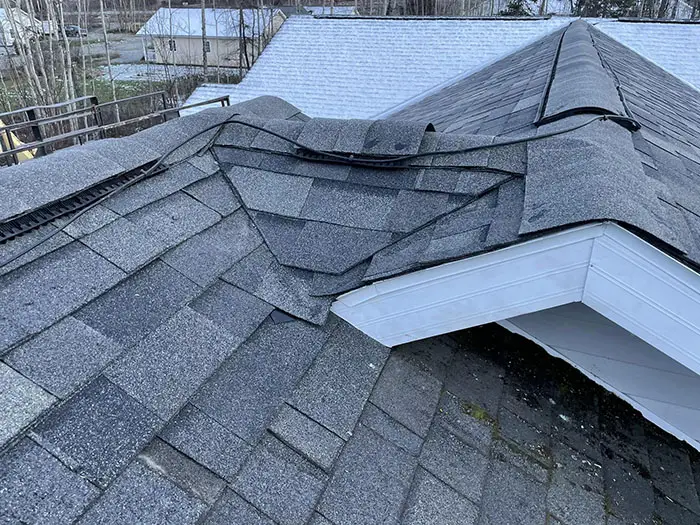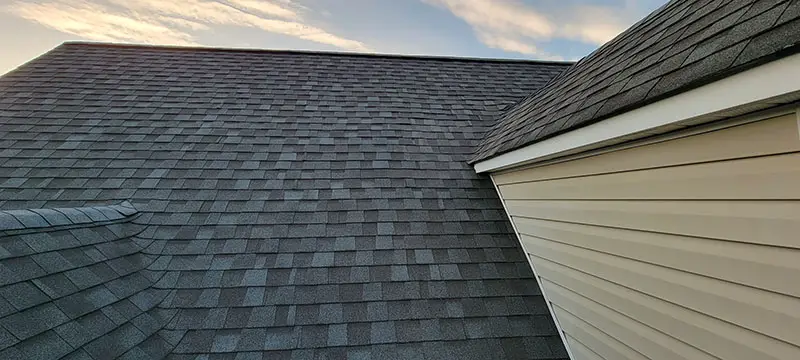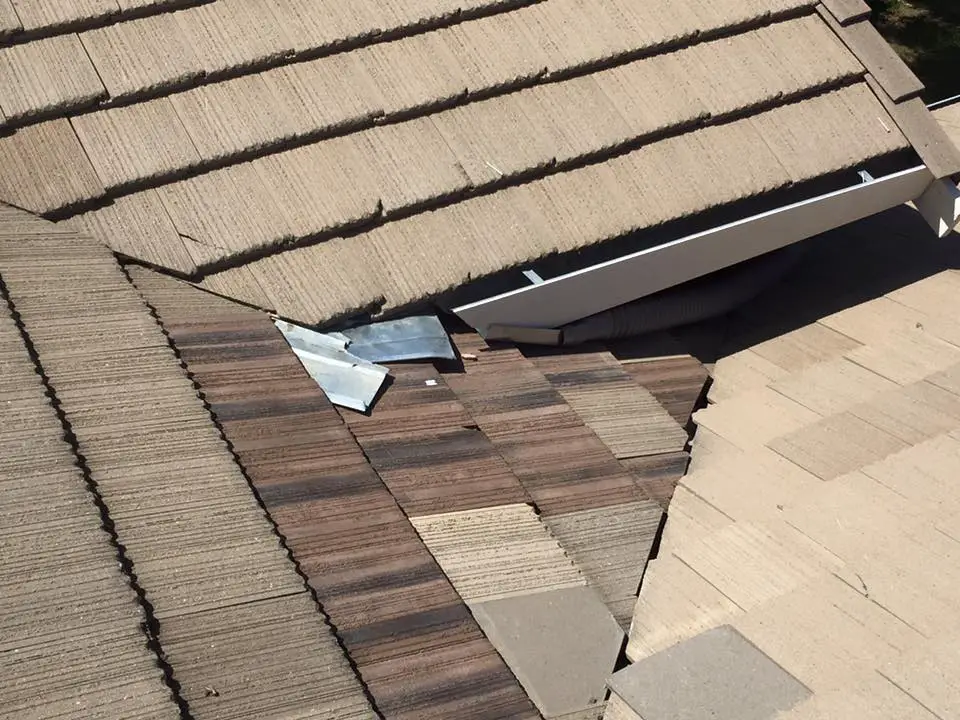When I lived in Alaska, I faced so many issues regarding diverting water from the roof valley. It cost me a fortune to fix things because of all the issues it created.
I used a few tools and regular maintenance, such as installing valley flashing, clearing debris regularly, regular gutter maintenance and guards, installing dry walls, etc., to avoid facing those problems it can create and divert water from the roof valley.
So, it’s better to install a few things and have regular maintenance so that water doesn’t get stuck. In the following sections, I discussed these exact issues and how to divert water step-by-step.

Quick Jump
Why Is It Necessary to Divert Water from Roof Valley?
You might already know the reasons, but I’ll briefly go through them for the sake of necessity and understanding the situation.
You and both know those roof valleys are those V-shaped areas where two sections of your roof come together. While they may look innocuous, valleys are like magnets for rainwater during those heavy downpours. If the water isn’t directed away, it can cause much trouble.
First and foremost, pooling water in roof valleys can lead to leaks and water damage. When water accumulates in the valley, it has a sneaky way of finding its way under your shingles and into your home. You might have soggy ceilings, peeling paint, and mold growth. Trust me, dealing with water damage is not fun to spend your time or money on.
But that’s not all! When water isn’t properly diverted, it can wreak havoc on your roof’s lifespan. Excess moisture can deteriorate the roofing materials, like the shingles or the underlayment. And you know what that means? It means you’ll have to shell out some serious dough for repairs or, worst case scenario, a full roof replacement.
In colder regions, snow can accumulate in roof valleys, leading to ice dams. Ice dams form when the snow melts and refreezes at the eaves, creating a barrier that prevents proper drainage. By diverting water from the valleys, we can help prevent ice dams and the potential damage they can cause to your roof and gutters.
Last but not least, when water is not properly diverted from roof valleys, it can overflow and cascade directly onto the ground near your home’s foundation. Over time, this can lead to erosion, basement flooding, and structural issues. By redirecting water away, we can safeguard your foundation and maintain the integrity of your home.
Tools You Need To Divert Water From Roof Valley

Now that you know how crucial it is to solve the situation as soon as possible, let’s get into the tools that you might need.
Of course, you will need a sturdy ladder to access the roof and work on the valley area safely.
After getting there, here are the other stuff you might need.
Valley Flashing: Depending on your existing roof structure, you may need valley flashing. It guides water away from the valley, preventing pooling or potential damage.
Screwdriver or Drill: You’ll need a trusty screwdriver to secure the valley flashing. Ensure you have the right tools depending on your preference and the type of fasteners needed.
Utility Knife: A utility knife is handy for cutting and trimming the valley flashing to the perfect size and shape. Precision is key when it comes to a snug fit.
Measuring Tape: Don’t forget your measuring tape! It’s essential for accurately measuring the dimensions of the valley and cutting the valley flashing to the right size. No guesswork here!
Caulk or Roofing Sealant: To ensure a watertight seal around the edges and seams of the valley flashing, you’ll need some caulk or roofing sealant to keep the water where it belongs.
I wish I could’ve ended there. But there are a few more!
Gutter Guards: If you want to keep those gutters clear of debris and flowing smoothly, consider installing gutter guards. Depending on your style, you might need screws, a screwdriver, or other fastening devices to secure them.
Downspout Extensions: To extend the downspouts away from the valley and direct water farther away from your foundation, grab some downspout extensions. They attach to your existing downspouts, giving that water a clear path to follow.
Rain Diverter or Rainwater Collector: If you want to get creative and collect rainwater or redirect it to a specific location, a rain diverter or rainwater collector could be just the thing. Ensure you have the tools specified by the product instructions to complete the job.
Now that we have all the tools let’s get started.
7 Steps to Divert Water from Roof Valley

In this section, I’ll walk you through the steps so that you can start the process. I’ll try to discuss it in detail so you can understand and do it yourself.
Step #1: Assess the Situation
Before you start diverting water from your roof valley, assessing the current drainage situation is important. Look closely at the valley area and identify any existing issues or potential improvements.
Look for water pooling or damage signs, such as rotting wood or discolored areas.
Step #2: Install Valley Flashing
After assessing the situation, using a ladder, carefully position and secure the valley flashing along the valley line. Get a screwdriver or drill to fasten it securely, ensuring it covers the entire length of the valley.
Step #3: Clear Debris
To maintain optimal water flow, keeping the valley free from debris is important. Regularly check and remove any leaves, twigs, or other debris accumulating in the valley.
Step #4: Gutter Maintenance and Guards
Next, pay attention to the gutters connected to the valley. Proper gutter maintenance is crucial for effective water diversion.
Regularly clean out any debris from the gutters and downspouts to prevent clogs. Additionally, consider installing gutter guards to further protect against debris accumulation. Gutter guards act as a barrier, allowing water to flow while keeping leaves and other debris out.
Step #5: Extend Downspouts
Evaluate the current downspout positioning and ensure they direct water away from the valley and foundation. If necessary, attach downspout extensions to the existing downspouts.
Step #6: Consider Diverter Systems
Sometimes, you may want to consider installing a diverter system to redirect water away from the roof valley. A rain diverter or rainwater collector can be placed on the roof above the valley area.
These devices capture and divert water to a desired location, such as a rain barrel or a specific drainage area in your yard.
Step #7: Create Swales or Install Dry Wells
For areas where water pooling remains a concern, creating swales or installing dry wells can help. A swale is a shallow ditch or channel that directs water away from the valley and into a designated drainage area.
Alternatively, a dry well is an underground structure that collects and gradually disperses water into the ground. These measures are particularly useful if you have a large amount of water runoff or if the terrain of your property allows for effective water absorption.
Wrap Up
That’s all you can do when diverting water from the roof valley. Maintain these steps regularly and keep close to those tools and materials because you never know when you need them.
Let me know If you’re facing any more roof valley issues or drainage issues. Good luck!

Roger Lewis is an experienced roof repair contractor with over 15 years of industry experience. He is known for his expertise in all aspects of roof repair, including leak detection, shingle replacement, and gutter repair.
